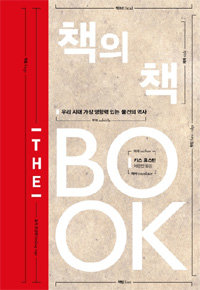The full history of the best human invention, books
The full history of the best human invention, books
Posted September. 21, 2019 07:28,
Updated September. 21, 2019 07:28

Obviously, it is safe to say that this publication illustrates the “origin of book species.” It traces back the path books have taken since their former versions existed, to the present day when “a death sentence was handed down to softcovers.” It is interesting to see how manmade crude paper has advanced to become the best-ever invention that shapes who we are as humans.
The author has shifted own focus to the physical component of books from semiology and punctuation marks, about which he or she used to write in the Financial Times and the Huffington Post. Type, printing, publishing and bookbinding technologies turned paper into an excellent documentary tool. As a result, paperbacks turned out to be the “fruit produced in the forefront of science and technology.”
Books date back 2,000 years or so. Parchment and papyrus were used in ancient Egypt before paper was invented as a main material for books. Letter systems and printing technology have built up the foundation of knowledge production. Then, design and illustration technology were used to complete the physical image of books we know today.
It was humans that instilled soul into the physical form. All kinds of “publishers” including scribes, monks, inventors and printers have thought hard to publish and transform books. In that sense, a deep look at the history of books is no different than a review of human history.
Books have figured out how to attract a wide range of readers over the long period of time. The author wrote: The reason why books are of a rectangular shape is that pieces of calf, goat and lamb skin leather are rectangular; and the reason why books are made in a proper size, easy to carry, is that people of today love those in that size.
The book lives up to its topic, the physical evolution of books, given that its texture and design show off their uniqueness. Probably, booklovers would love to display a copy on their bookshelf. The book cover is made of cardboard with its title hot-stamped in white letters and its subtitle printed in black silk screen. As if it were an architectural plan, the cover elaborates the names of a book’s parts such as “head,” “binding tape,” “hinge,” and “publisher logo”. Ample visual aids also help immerse readers into the book.
Every single detail of books gives us “too much information,” so to speak. However, the book puts a smile on the reader’s face with its enormous vitality just as a natal chart until the last page is turned over.
pep@donga.com







